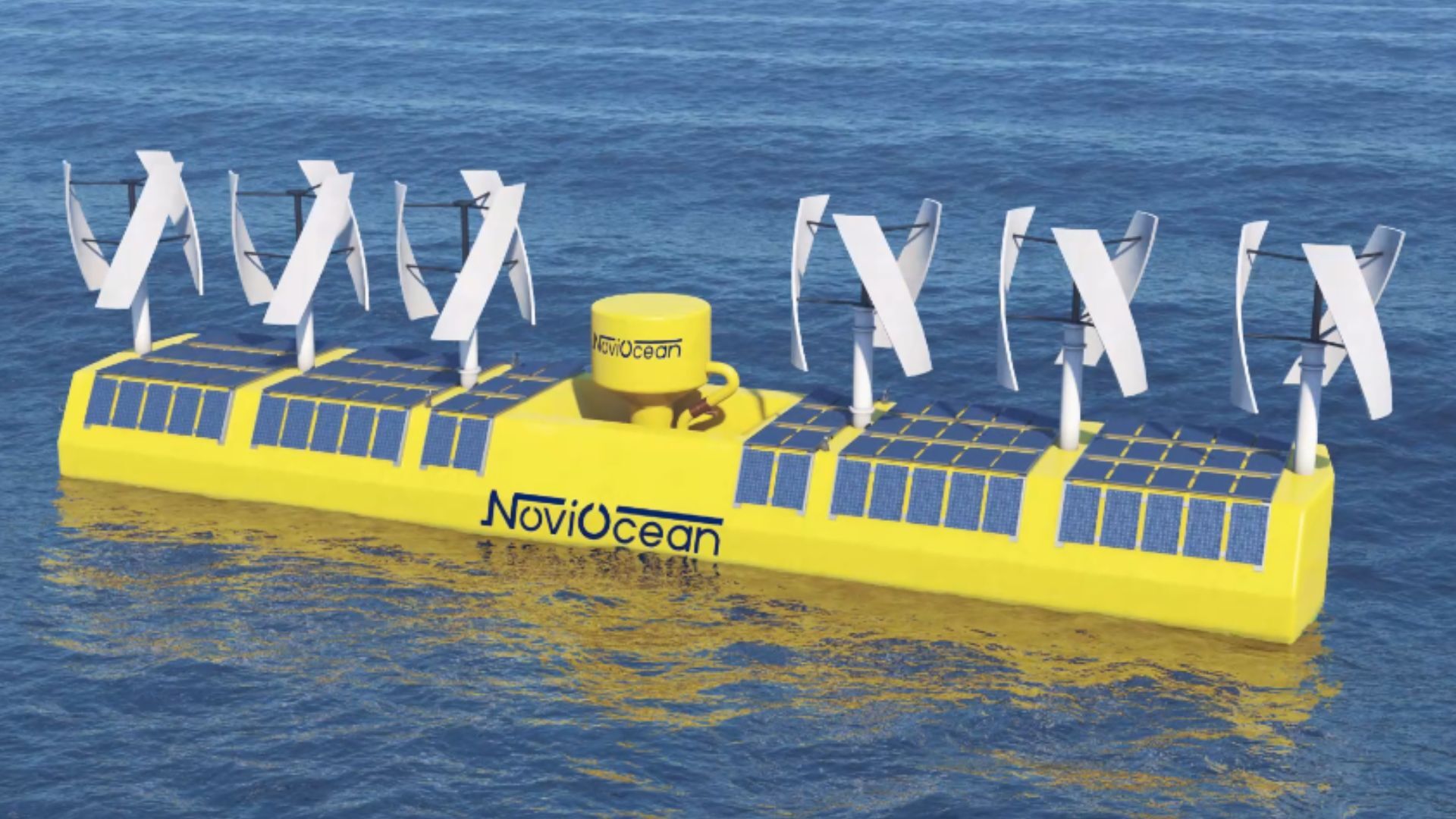NoviOcean’s wave power technology, developed over several years, has been tested in wave pools and a real environment near Stockholm. A small version powers homes on Svanholmen island, proving the concept works at sea.
On one square kilometer, 15 wave power plants can generate 15 MW, compared to offshore wind’s 10 MW. Combined, they can produce 25 MW, sharing the costs of the sea area and transmission cable.
According to the firm, the hybrid approach delivers more consistent energy, as waves generate power for days after the wind subsides. Additionally, wave plants can be placed closer to shore without visually disturbing the coastline.
I thought wave generation was still a failure due to cost and maintenance.
Everything is too expensive and difficult until it isn’t.
Where did you get that from? Some things just stay expensive and difficult.
Well, is it?
Narrator: it was.
Narrator: until it wasn’t.
there evidently exist, in this nascent technology, peaks and troughs.
Yeah, but the future seems bright.
I get the appeal of having a mixture of renewable generation methods, but is it really the best way to jsht put them all on one structure? Do waves not somewhat inferfere with the action of both solar panels (which will not be properly aligned of they’re rocking about) and turbines (which surely suffer if they are in turbulent airflow thanks to being jostled about)?
Honestly, I think this is cool, and maybe even efficient. But I laughed when I saw it: “let’s put ALL OF THE THINGS ON IT!”
I speculate that this balanced out by the fact that a single one of these can more easily connect to the power grid and are more efficient to deploy and maintain in large quantities.
You could place these almost anywhere and they will generate something.
Yea, but I would imagine the upkeep and maintenance on these, especially due to being in salt water, is higher than it needs to be. Simple is generally better for these things.
I can definitely see them being useful in remote areas where large scale power generation projects are not viable.
The pictured kinds of turbine works very well with wind from any direction. I’d be more concerned about having low friction bearings so close to sea water.
power 1,000 homes per day
Good that the journalist does not confuse kW and kWh but “homes” is a very understandable unit they somehow got wrong.
For fuck’s sake, a microreactor could do all of this for the footprint of a bedroom (plus some additional space for the staff). It would work for years and constantly provide power with no issues from storms, dust, salt, or needing distributed maintenance (and environmental disruption) over a square km.
This isn’s just some generic hand waving. Go look up the company Radiant. It’s going to happen within a few years. Demonstration is slated for 2026.
So what are you saying, that we should give up on other technologies? Two years before your microreactor is demonstrated?
This is a fanciful and complex power system that is proposed that cannot produce consistent power reliably. I don’t think it will be viable in the long run.
Well, I’m sold. We should definitely turn everything off and wait for the hypothetical reactor to materialise.
That’s not what I said, and your comment is disingenuous in that regard.
How is it fanciful? It’s taking a bunch of solid, proven technologies and putting them in the same place. It’s nothing more than a standard engineering project.
Relevant link for those interested in what OP is talking about.
https://www.energy.gov/ne/articles/3-microreactor-experiments-watch-starting-2026
I’m not yet convinced this technology is the future or anything, but it does look pretty promising. We’ll know better when DOME testing begins in 2026.
I would hope it would be at least slightly more well-designed than the render where the miniature windmills are positioned perfectly to block the solar








